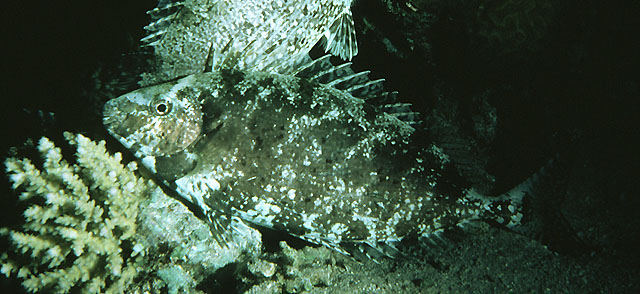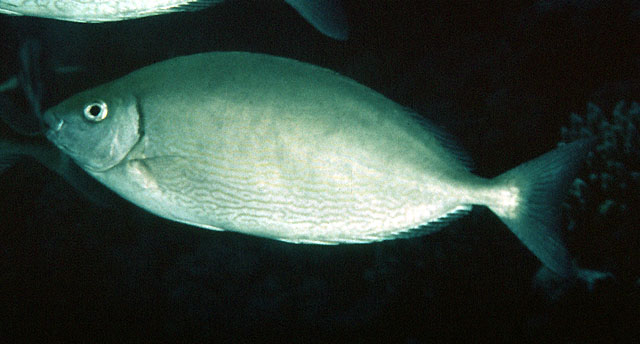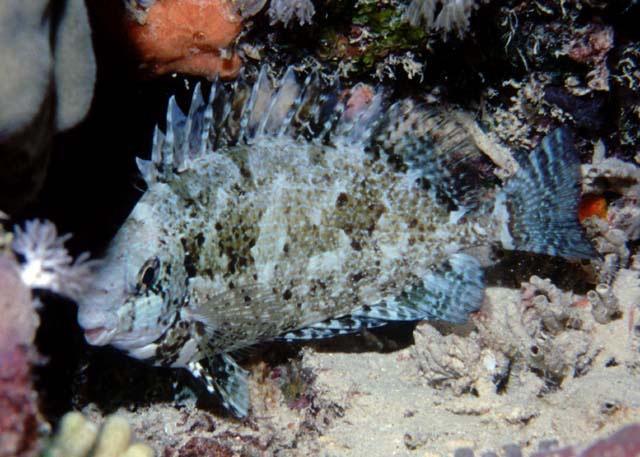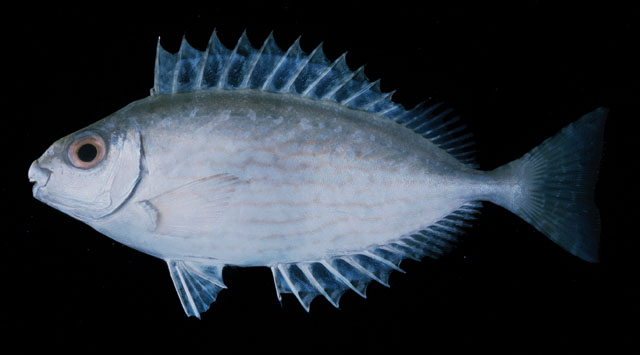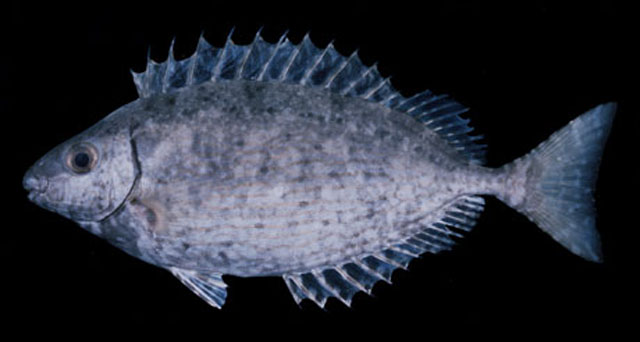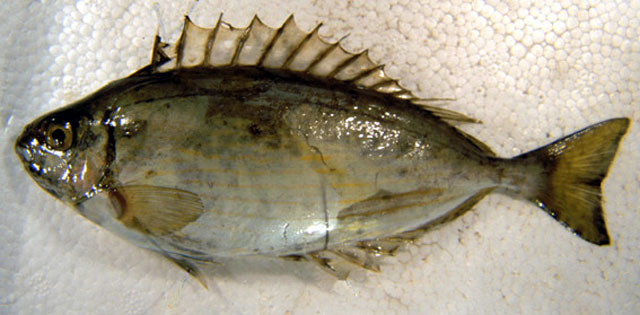Siganus
rivulatus
Forsskål &
Niebuhr,
1775
Marbled spinefoot
View all media / Upload your photos and videos
Expand all
Classification / Names
Teleostei (teleosts) > Acanthuriformes (Surgeonfishes) >
Siganidae (Rabbitfishes)
Etymology: Siganus: Latin, siganus = a fish, rabbit fish; by the similarity of the nose (Ref. 45335).
More on authors:
Forsskål &
Niebuhr.
Environment / milieu / depth range / climate zone / distribution range
Marine; brackish; reef-associated; depth range 1 - 30 m (Ref. 50672); subtropical; 32°N - 36°S25°E - 58°E.
Distribution
Western Indian Ocean: several localities in East Africa, and from the Red Sea to the eastern Mediterranean via the Suez Canal.
Maps

Siganus rivulatus / Native range
AquaMaps Data sources:
GBIF
OBIS
This map was computer-generated and has not yet been reviewed.

Siganus rivulatus / Suitable habitat
AquaMaps Data sources:
GBIF
OBIS
This map was computer-generated and has not yet been reviewed.

Siganus rivulatus / Point map
AquaMaps Data sources:
GBIF
OBIS
This map was computer-generated and has not yet been reviewed.

Siganus rivulatus / Year 2050
AquaMaps Data sources:
GBIF
OBIS
This map was computer-generated and has not yet been reviewed.
Length at first maturity / Size / Weight / Age
Short description
Dorsal spines (total): 13; Dorsal soft rays (total): 10; Anal spines: 7; Anal soft rays: 9; Vertebrae: 23. Upper body gray, green or brownish, silvery below; iris iridescent silver or golden. Body color patterns extend to the fins. Spines slender, pungent and venomous. Preopercular angle 88°-96°; cheeks scaled; midline of thorax, isthmus and midline of belly without scales. Frightened fish become mottled or with 6 diagonal zones across side. Tip of broad-based flap of anterior nostril reaching at least halfway to orifice of posterior nostril.
Biology
Inhabits shallow waters and generally in schools of 50 to several hundred individuals; prefers protected areas. Feeds by grazing on algae.
Main reference
Woodland, D.J. 1990 Revision of the fish family Siganidae with descriptions of two new species and comments on distribution and biology. Indo-Pac. Fish. (19):136 p. (Ref. 1419)
IUCN Red List Status (Ref. 125652)
Least Concern (LC); date assessed: February 04 2009
CITES (Ref. 131153)
Not Evaluated
CMS (Ref. 116361)
Not Evaluated
Threat to humans
Venomous (Ref. 4537)
More information
- Countries
- FAO areas
- Ecosystems
- Occurrences
- Introductions
- Stocks
- Ecology
- Diet
- Food items
- Food consumption
- Ration
- Common names
- Synonyms
- Metabolism
- Predators
- Ecotoxicology
- Reproduction
- Maturity
- Spawning
- Spawning aggregation
- Fecundity
- Eggs
- Egg development
- Age/Size
- Growth
- Length-weight
- Length-length
- Length-frequencies
- Morphometrics
- Morphology
- Larvae
- Larval dynamics
- Recruitment
- Abundance
- References
- Aquaculture
- Aquaculture profile
- Strains
- Genetics
- Allele frequencies
- Heritability
- Diseases
- Processing
- Mass conversion
- Vision
- Pictures
- Stamps, Coins Misc.
- Sounds
- Ciguatera
- Speed
- Swim. type
- Gill area
- Otoliths
- Brains
Estimates based on models
Preferred temperature (Ref. 123201): 24.7 - 29.2, mean 27.3 °C (based on 573 cells).
Phylogenetic diversity index (Ref. 82804): PD50 = 0.5 [Uniqueness, from 0.5 = low to 2.0 = high].
Bayesian length-weight: a=0.01175 (0.00969 - 0.01425), b=2.99 (2.94 - 3.04), in cm total length, based on LWR estimates for this species (Ref. 93245).
Trophic level (Ref. 69278): 2.0 ±0.0 se; Based on diet studies.
Generation time: 4.0 (1.3 - 4.9) years. Estimated as median ln(3)/K based on 11 growth studies.
Resilience (Ref. 120179): Medium, minimum population doubling time 1.4 - 4.4 years (K=0.22, tm=1-2).
Fishing vulnerability (Ref. 59153): Low to moderate vulnerability (31 of 100).
Price category (Ref. 80766): High; Questionable: based on ex-vessel price for species in this genus.
Nutrients (Ref. 124155): Calcium = 21.9 [10.0, 56.0] mg/100g; Iron = 0.57 [0.26, 1.33] mg/100g; Protein = 19.5 [18.5, 20.6] %; Omega3 = 0.21 [0.11, 0.45] g/100g; Selenium = 7.41 [2.58, 18.44] μg/100g; VitaminA = 52.3 [14.3, 193.5] μg/100g; Zinc = 1.38 [0.54, 3.02] mg/100g (wet weight); based on nutrient studies.

